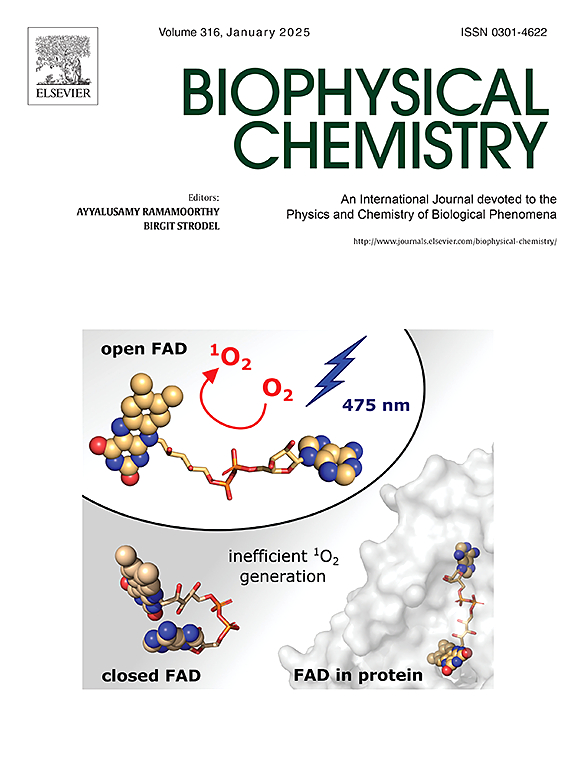A detailed review of genetically encodable RFPs and far-RFPs and their applications in advanced super-resolution imaging techniques
IF 2.2
3区 生物学
Q2 BIOCHEMISTRY & MOLECULAR BIOLOGY
引用次数: 0
Abstract
The red fluorescent proteins (RFPs) and far-red fluorescent proteins (far-RFPs) that are encoded genetically can emit fluorescence within the spectral ranges of 580–680 nm when exposed to the light of appropriate wavelengths. Unlike many RFPs derived from coral species, numerous far-RFPs are optimized synthetic constructs engineered from different orange or red-emitting progenitors. Various categories have been established for the available RFPs and far-red fluorescent proteins based on their photo-chemical profile, fluorescence mechanism, and switching kinetics. Fluorescent probes (FPs) derived from these classes are extensively utilized for labelling and visualizing in vivo and in vitro specimens. Traditional optical microscopy methods generate diffraction-limited, indistinct images owing to the restricted resolution capability of light ranging from 200 to 300 nm. Since 2005, super-resolution microscopy has been a topic of great interest due to its ability to achieve imaging at spatial resolutions of less than 100 nm. The 2014 Nobel Prize in Chemistry was awarded to Eric Betzig, Stefan Hell, and William E. Moerner for their contributions to demonstrating the effectiveness of genetically encodable fluorescent proteins in visualizing biological systems through super-resolution fluorescence microscopy. This review provides a concise overview of RFPs and far-RFPs, including the involvement of surrounding residues in chromophore intactness, stability, autocatalytic maturation and switching kinetics. All the chemical pathways proposed for photoactivation, photoconversion and photoswitching mechanisms are concisely reviewed. Subsequently, a comprehensive summary was provided regarding the various types of super-resolution techniques that are commonly employed, elucidating their underlying principles of operation, as well as the potential future applications of RFPs/far-RFPs in the field of biological imaging.
综述了遗传可编码rfp和远编码rfp及其在先进超分辨率成像技术中的应用。
基因编码的红色荧光蛋白(rfp)和远红色荧光蛋白(far- rfp)在适当波长的光照射下可发出580-680 nm光谱范围内的荧光。与许多来自珊瑚物种的rfp不同,许多远rfp是由不同的橙色或红色发光祖细胞工程化的优化合成结构。基于它们的光化学特征、荧光机制和开关动力学,已经为可用的rfp和远红色荧光蛋白建立了各种类别。来自这些类别的荧光探针(FPs)广泛用于体内和体外标本的标记和可视化。传统的光学显微镜方法产生衍射有限,模糊的图像,由于有限的分辨率的光范围从200到300纳米。自2005年以来,超分辨率显微镜一直是一个非常感兴趣的话题,因为它能够在小于100纳米的空间分辨率下实现成像。2014年诺贝尔化学奖被授予Eric Betzig, Stefan Hell和William E. Moerner,以表彰他们通过超分辨率荧光显微镜展示遗传可编码荧光蛋白在可视化生物系统中的有效性。本文简要介绍了rfp和远rfp的研究进展,包括周围残基对发色团完整性、稳定性、自催化成熟和开关动力学的影响。简要介绍了光激活、光转化和光开关机制的所有化学途径。随后,对各种常用的超分辨率技术进行了全面的总结,阐明了其基本的工作原理,以及rfp /far- rfp在生物成像领域的潜在应用前景。
本文章由计算机程序翻译,如有差异,请以英文原文为准。
求助全文
约1分钟内获得全文
求助全文
来源期刊

Biophysical chemistry
生物-生化与分子生物学
CiteScore
6.10
自引率
10.50%
发文量
121
审稿时长
20 days
期刊介绍:
Biophysical Chemistry publishes original work and reviews in the areas of chemistry and physics directly impacting biological phenomena. Quantitative analysis of the properties of biological macromolecules, biologically active molecules, macromolecular assemblies and cell components in terms of kinetics, thermodynamics, spatio-temporal organization, NMR and X-ray structural biology, as well as single-molecule detection represent a major focus of the journal. Theoretical and computational treatments of biomacromolecular systems, macromolecular interactions, regulatory control and systems biology are also of interest to the journal.
 求助内容:
求助内容: 应助结果提醒方式:
应助结果提醒方式:


